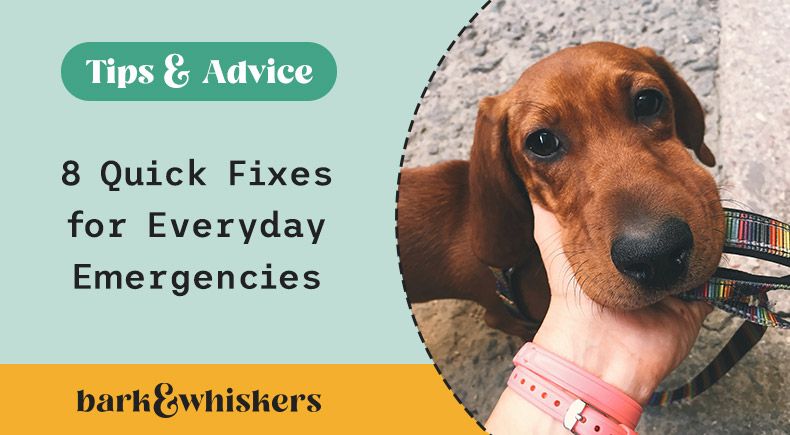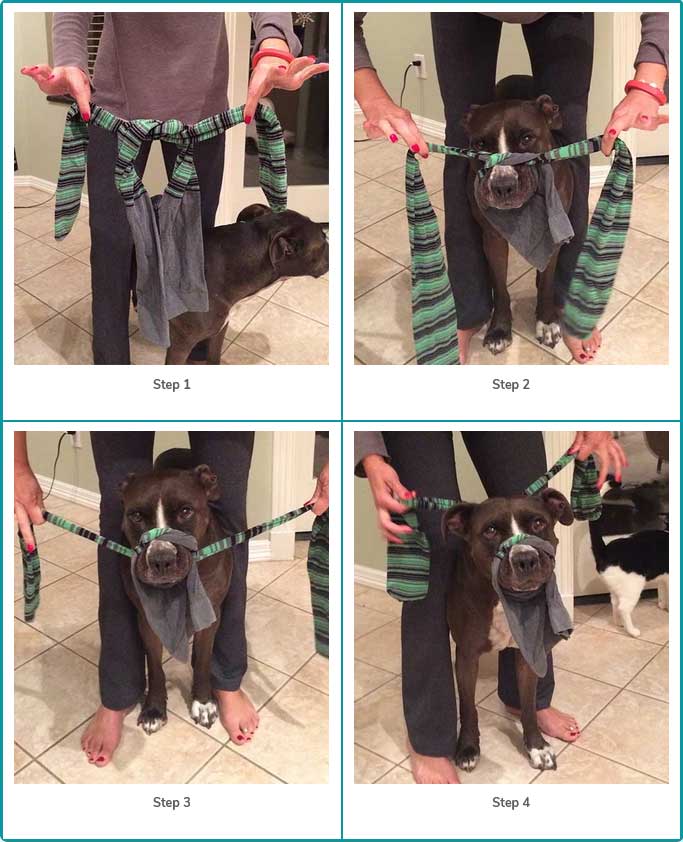8 Quick Fixes for Everyday Emergencies
Did you know that not every minor injury or illness requires a trip to the veterinarian? With the right tools on hand, you can help your pet overcome digestive issues, a low blood sugar attack, cuts and scrapes, bee stings, and nail injuries.

STORY AT-A-GLANCE
- Most pets get minor injuries or illnesses from time to time, and often, pet parents don’t realize they may have just the right treatment in a kitchen or bathroom cabinet
- Good items to keep on hand for minor pet emergencies include 100% canned pumpkin for tummy troubles, 3% hydrogen peroxide to induce vomiting, styptic powder for bleeding nails, and honey for diabetic pets
- Also, a credit card is good for removing bee stingers, and contact lens saline solution can be used in a pinch to clean out a pet’s cut or scrape
In these inflationary times, it’s good to know some tips and tricks for treating minor pet emergencies at home. Thankfully, not every little accident your furry family member has around your house, yard, or neighborhood needs to result in a veterinary bill.
When your dog or cat acquires a minor injury, there may be a quick fix as close as your kitchen or bathroom cabinet.
8 Quick DIY Fixes for Minor Pet Injuries and Illnesses
1. Problem: Constipation, diarrhea, hairballs, and other minor digestive issues — Most pets at one time or another experience gastrointestinal (GI) issues that last for a few days and disappear.
DIY Solution: Canned pumpkin — It’s a good idea to keep a can of 100% pumpkin (not pumpkin pie mix) in your kitchen cabinet for occasional mild tummy upsets. Give a teaspoon of pumpkin for every 10 pounds of body weight, one to two times a day, either in food or as a treat. Pumpkin is rich in soluble fiber that can ease both diarrhea and constipation.
2. Problem: Indiscriminate eating — If your pet has very recently ingested something she shouldn’t, for example, antifreeze or another toxin, you may need to induce vomiting. Always call your vet or an animal poison control hotline if you suspect your pet has swallowed a poison.
DIY Solution: Hydrogen peroxide — I'm talking about 3% hydrogen peroxide — the kind you purchase at any pharmacy. The dose is one teaspoon for every 10 pounds of body weight. Hydrogen peroxide typically induces vomiting within 15 minutes. If your pet doesn't vomit within that time, you can give her a second dose, but if another 15 minutes passes and she still hasn't vomited, it's time to call your veterinarian.
3. Problem: Cuts and scrapes — Pets can get minor cuts and scrapes while running around the backyard or out for a walk.
DIY Solution: Contact lens saline solution — You can clean dirt and debris from your pet’s minor wound with regular human contact lens saline solution. You can also use it to flush out dirt, sand, or other irritants from your pet’s eye.
4. Problem: Nail injury — Dogs and cats can slice up their nails in a variety of ways — everything from a too-close nail trim that nicks the quick, to running outdoors over sharp rocks.
DIY Solution: Styptic powder — If you don’t have styptic powder on hand, for minor bleeding grab either cornstarch or flour from your kitchen, pour some into a small bowl, and dip the injured paw into the powder to stop the bleeding.
5. Problem: Thunderstorm phobia — Many pets, especially dogs, fear thunderstorms. But it’s not just the thunder and lightning that makes your dog anxious, it’s also the static electricity that can accumulate in her coat, giving her little electric zaps that are unnerving.
DIY Solution: A steamy room — Pets with thunderstorm phobia often feel more comfortable in a steamy/humid space that removes static from their coat, so try putting your dog (or cat) in the bathroom while running hot water in the shower.
Alternatively, you can rub your pet’s coat with a nontoxic dryer sheet for the same effect. Many dryer sheets are loaded with chemicals that shouldn’t remain on the fur, so make sure you have chemical free dryer sheets on hand.
6. Problem: Bee sting — Most bee stings occur on a paw or the face. Not only are bee stings painful, but your pet could also have an allergic reaction.
DIY Solution: Credit card and quercetin — If you need to remove the bee’s stinger, don’t use tweezers. Use a credit card from your wallet to scrape away the stinger — just make sure the venom sac comes out with it.
If your pet has a mild allergic reaction to a bee sting, offer quercetin (I call it “nature’s Benadryl”) if you have it, or real Benadryl if you don’t. Serious allergic reactions require an immediate visit to your veterinarian or the closest emergency veterinary clinic.
7. Problem: Dangerously low blood sugar in a diabetic pet — If your pet has diabetes mellitus, you’ll want to do everything possible to prevent a hypoglycemia attack that can lead to a diabetic coma.
DIY Solution: Honey — As soon as you see your pet’s lips start to quiver or his body start to shake, you need to grab the honey and rub a little on his gums. Make sure to use honey, not corn syrup, which can contain genetically modified and/or allergenic ingredients.
8. Problem: An injured pet who might bite — If your pet is sick or injured, it’s important to protect yourself and anyone else who is handling or caring for him. Even the most passive, gentle pet can bite in response to fear or pain.
Solution: A homemade muzzle — Most owners of easy-going pets don’t even own a muzzle, so if you ever find it necessary to prevent your dog (or even your cat) from biting out of fear or pain, you can quickly improvise a muzzle from a pair of hose or tights, a man’s tie, or any available strip of cloth (a leash can even work).
The make-shift muzzle is lightly looped over your pet’s nose and mouth, then crossed under the chin, and tied behind the ears.

In most cases of even a minor pet injury or illness, after applying a home remedy, it’s still a good idea to follow up with your veterinarian to ensure your dog or cat is receiving appropriate care. Chances are you won’t need an appointment, but your vet may want to note the information in your pet’s chart for follow up at your next regularly scheduled visit.











